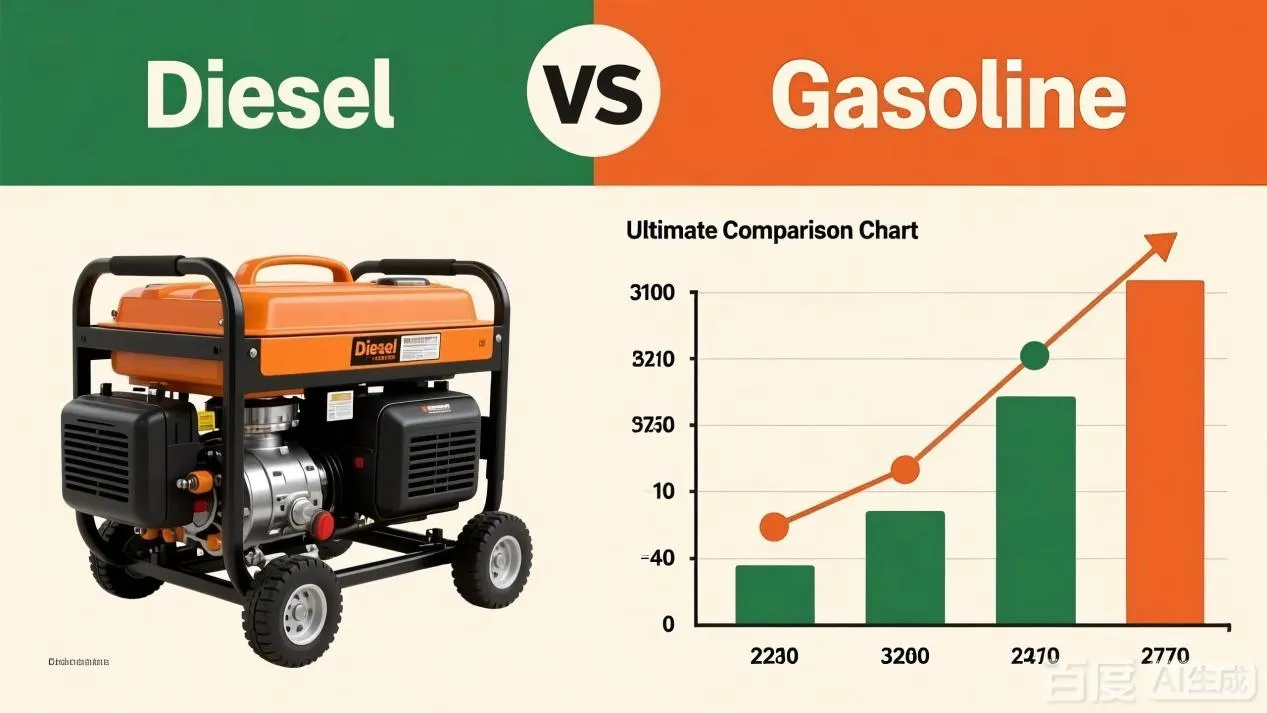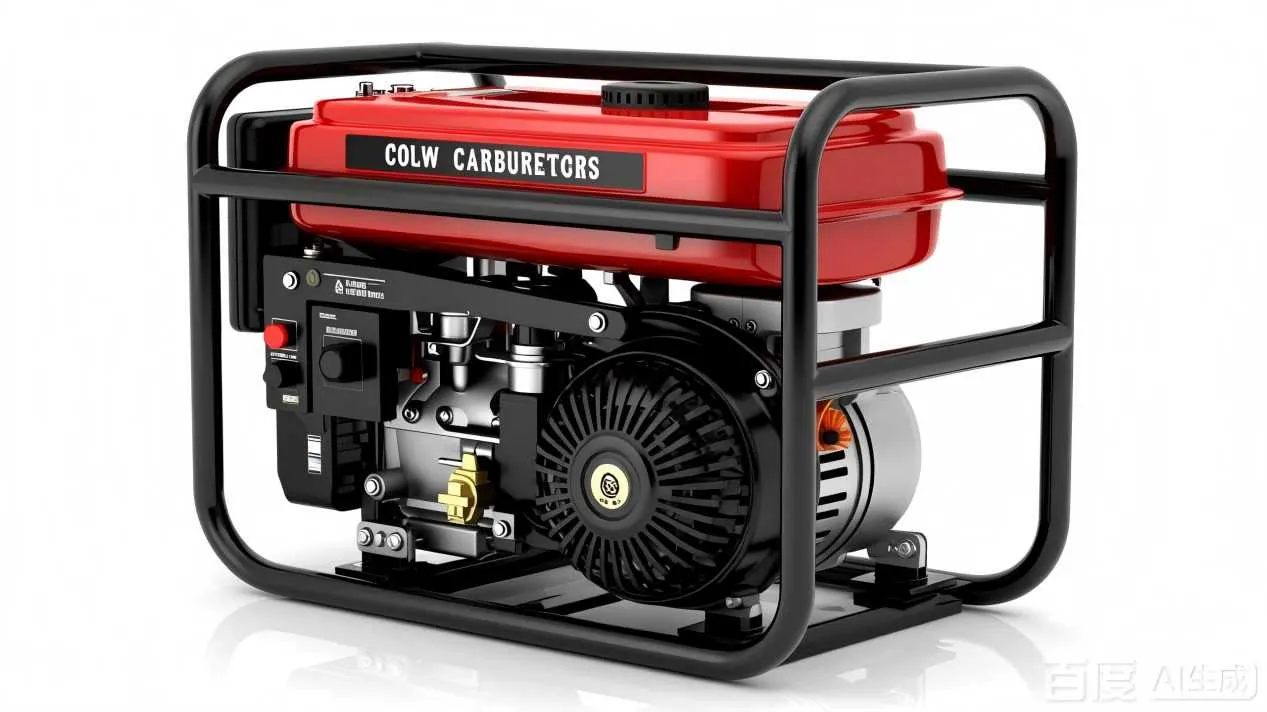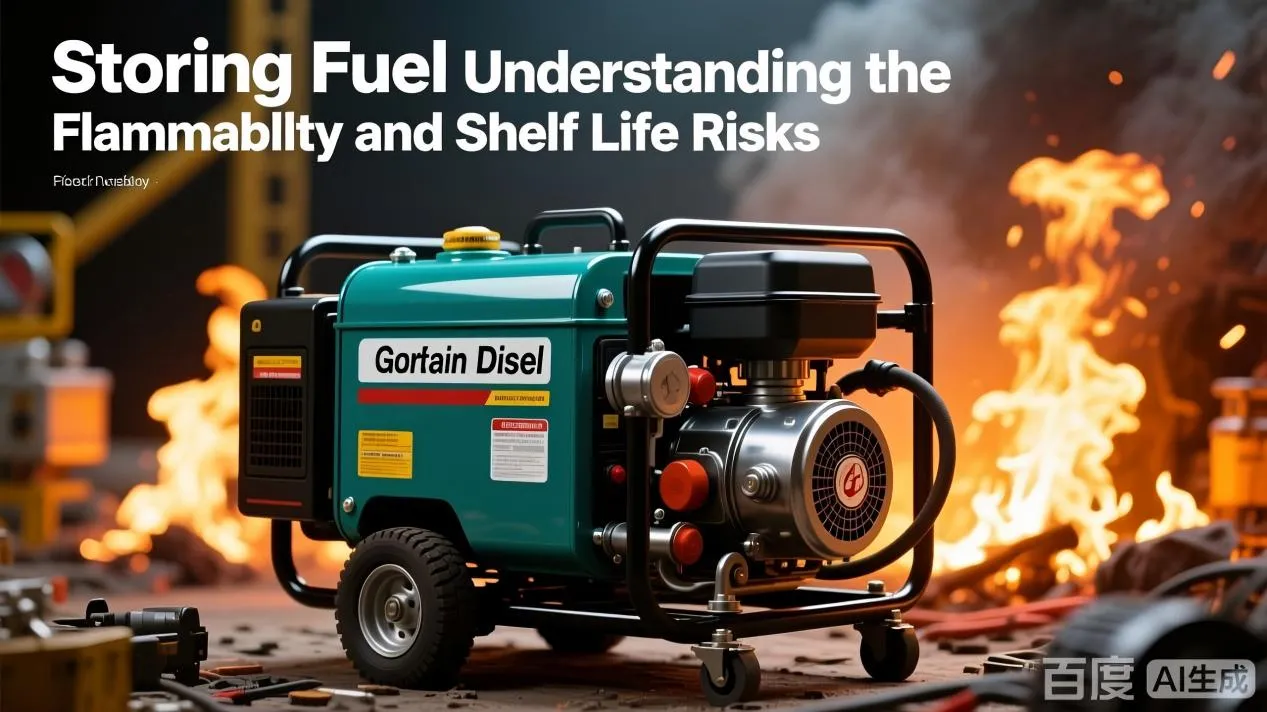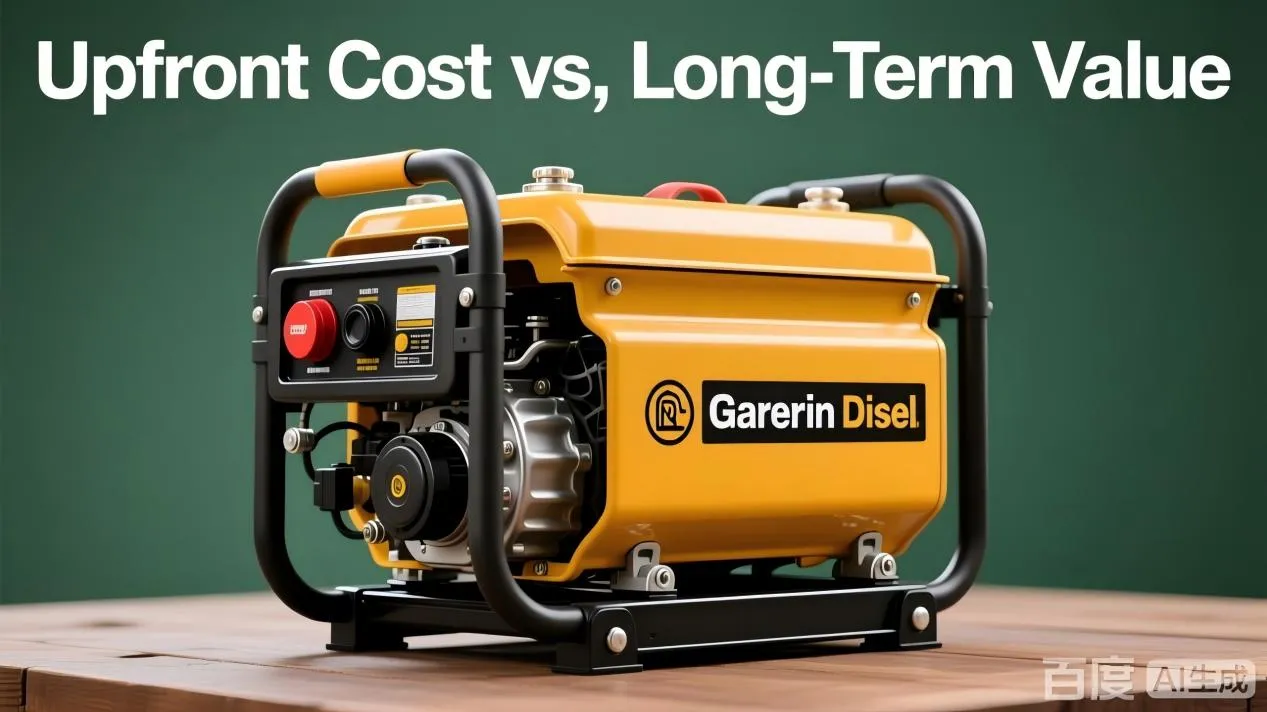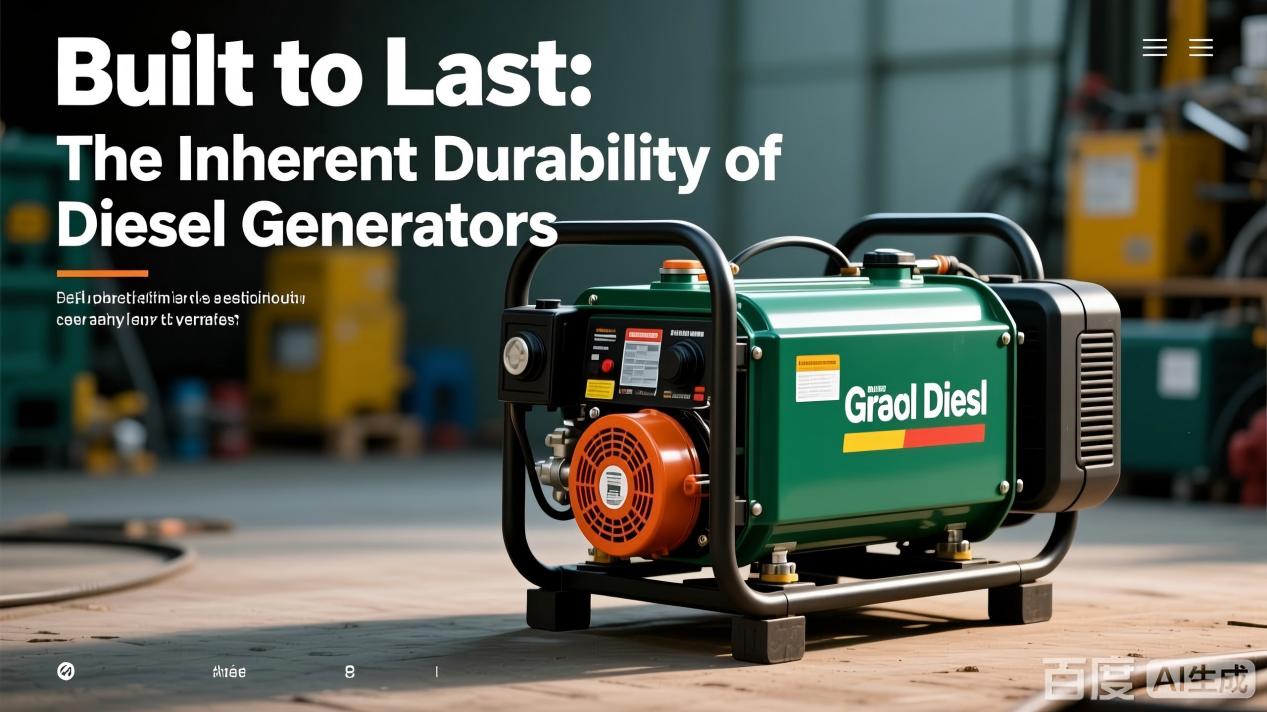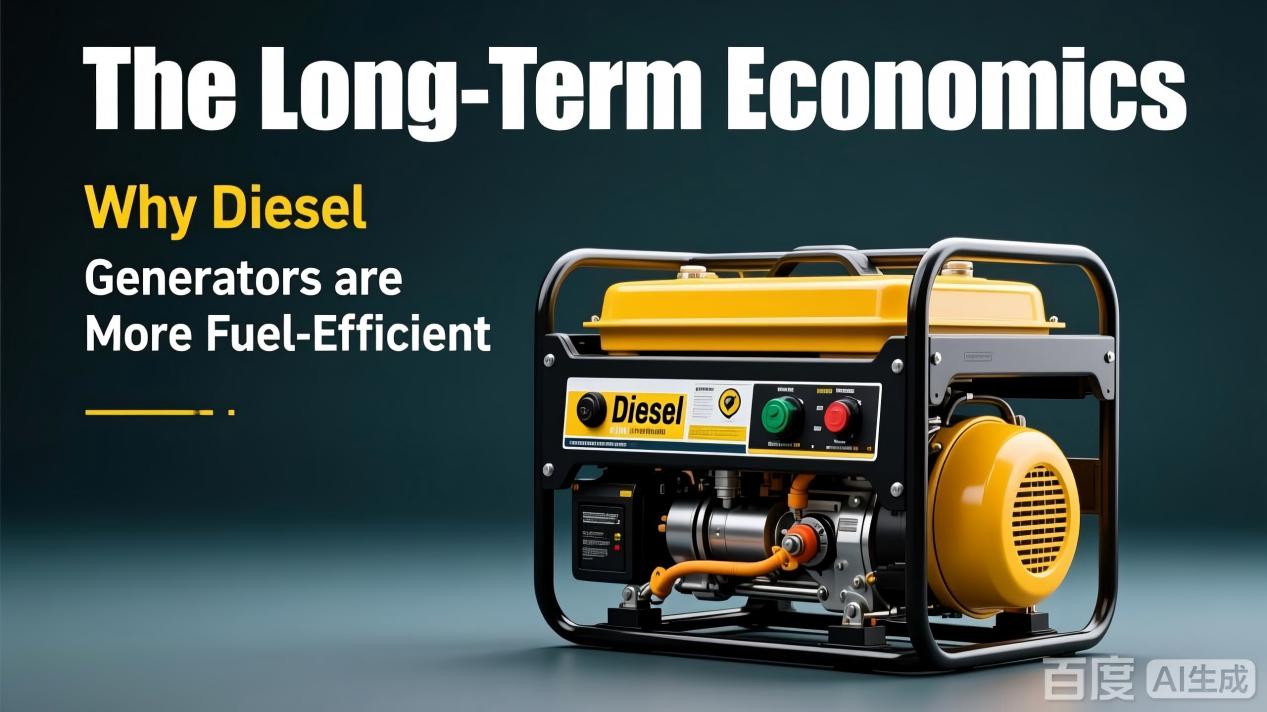The Core Difference: Compression Ignition vs. Spark Ignition
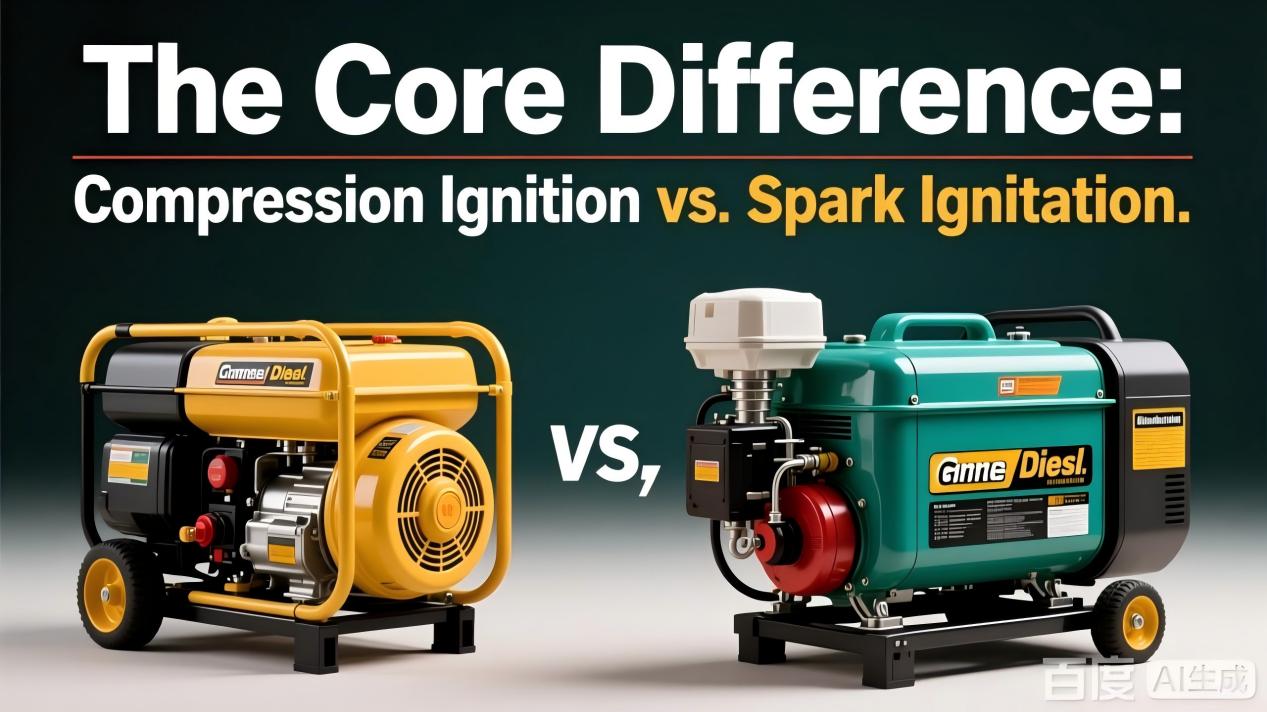
While both diesel and gasoline generators produce electricity through an internal combustion engine, their fundamental ignition process is radically different. This difference dictates their design, efficiency, and application.
A gasoline generator operates on the Otto cycle. It uses a spark-ignition system. Here's the process:
Intake Stroke: A mixture of air and vaporized gasoline is drawn into the cylinder.
Compression Stroke: The piston compresses this air-fuel mixture.
Power Stroke: At the peak of compression, a spark plug ignites the compressed mixture, causing a controlled explosion that forces the piston down, creating power.
Exhaust Stroke: The piston pushes out the burnt gases.
A diesel generator operates on the Diesel cycle. It uses compression-ignition.
Intake Stroke: Only air is drawn into the cylinder.
Compression Stroke: The piston compresses this air to an extremely high pressure, raising its temperature dramatically (to over 1,000°F / 540°C).
Power Stroke: At the peak of compression, diesel fuel is injected directly into the superheated air. The heat alone causes the fuel to ignite spontaneously without a spark plug.
Exhaust Stroke: The piston pushes out the burnt gases.
This lack of a spark ignition system makes diesel engines mechanically simpler and more robust in one way, but their fuel injection systems are far more complex and precise to handle the extreme pressures involved.
